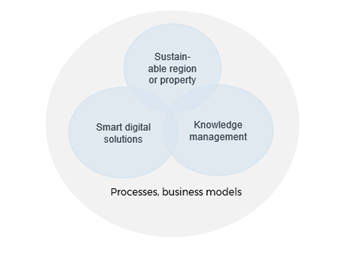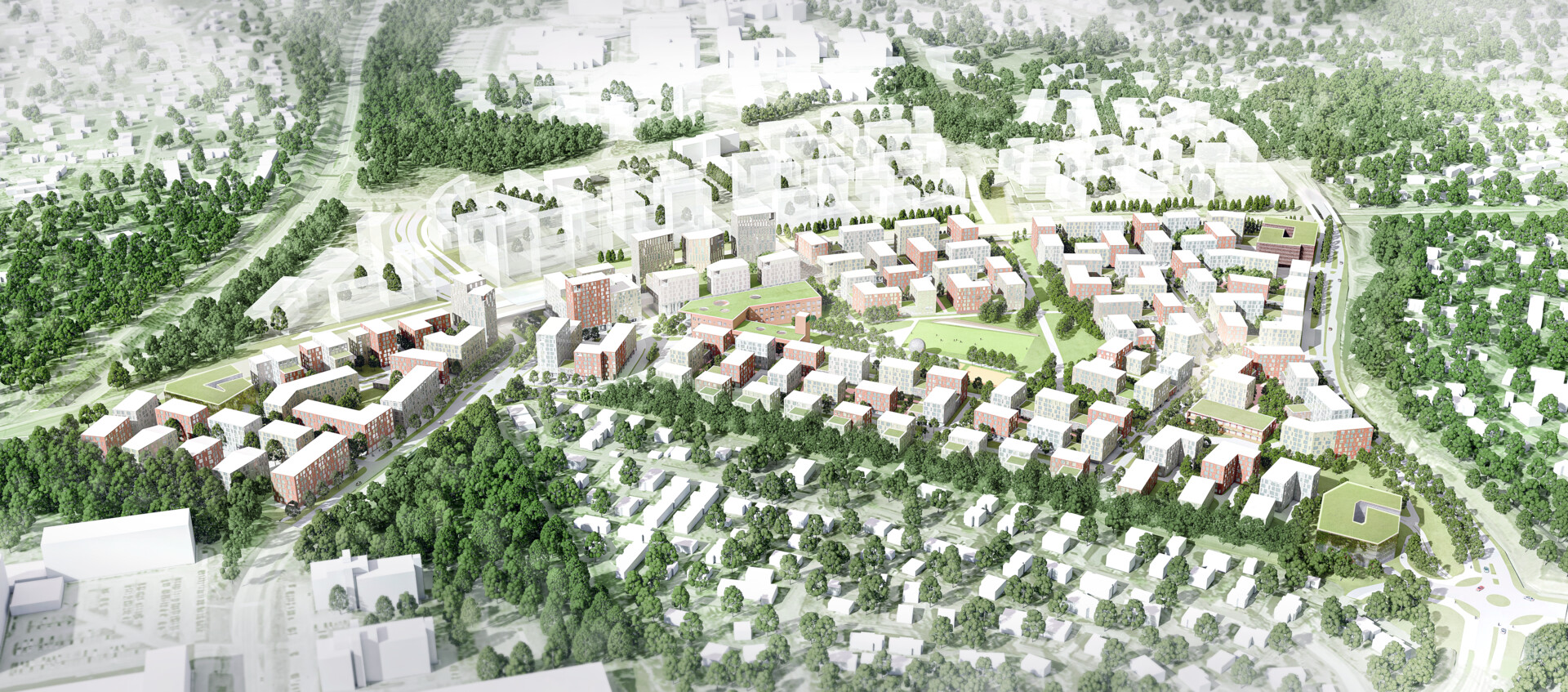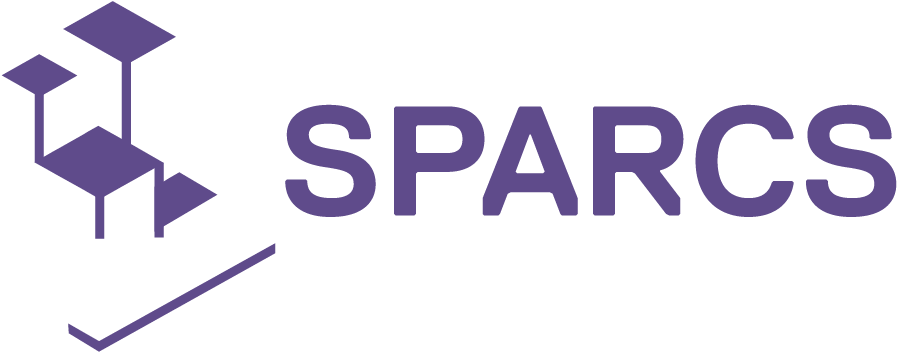Consultant’s guest blog: Co-creation—the key to creating value for a city’s future
Land use planning—its purpose, goals, and the changing operational environment—determines how we plan and measure a region’s development. The planning system created for the spatial management of activities in an industrialized welfare society is not, as such, able to respond to current demands for ecological, social, and economic sustainability, reforming systemic approaches, and implementing digitalization. Additionally, social development is less predictable, and disruptions have increased. Regional development is currently searching for ways to respond to this, and planning methods are changing.
Creating sustainable and smart for the mainstream
In 2022, we will explore the potential and limitations of co-creation as a method for sustainable urban planning and continuous value creation. This project is part of the EU Horizon 2020 Sustainable energy Positive & zero cARbon CommunitieS (SPARCS) project. Espoo is one of the cities demonstrating new solutions. The critical issue has been ensuring the success of a process with diverse participants and society’s continuous development without being anchored to a specific end-state. Achieving a common understanding of the objectives and ensuring the feasibility of new ideas has also proved to be key.
Co-creation is an equal, network-based, collaborative endeavour toward a common goal in physical or virtual environments. A networked, multilateral way of working and organizing enables addressing complex issues, such as achieving sustainability. Regional development is a demanding area of co-creation due to the number of parties involved and the initial scope of the task. In such a context, implementing sustainability objectives and new solutions is a particular challenge.
“A sustainable and smart city is also a way to organize its achievement.”
A co-created city
A sustainable and smart city is also a way to organize its achievement. How might sustainable and digital solutions best be implemented at regional and project levels?
The transition to sustainability is essentially a strategic change. There are three main types of changes in strategic direction: 1) strengthening or expanding an existing one, 2) rethinking an activity or end product, or 3) changing direction completely (Hunsaker B T & Knowles J, 2021). For sustainable and smart regions, it is important to consider the region’s current starting points and the innovations and solutions offered by the operating environment—and, on the other hand, the test environments and markets for these innovations offered by regional development. This requires new actors to enter and participate in the traditional process.
Amsterdam has progressed with a robust, comprehensive smart city strategy, which is closely linked to urban planning. Amsterdam Smart City (ASC) is an innovation platform for a sustainable city of the future. The platform is based on a rapidly growing community of around 400 organizations and more than 5,000 people, including many start-ups. Community members have launched many internationally renowned projects, such as Circular Amsterdam and City-zen. The community cooperates with the Amsterdam Economic Board, a foundation that promotes cooperation between research institutes, universities, businesses, and governments. The strategy of both organizations strongly prioritizes the development of bottom-up urban policies, and what is done is strongly based on co-creation.
Amsterdam Smart City project
Through partnerships, the Amsterdam Smart City project aims to test smart technologies that save energy, reduce carbon emissions and facilitate sustainable choices in the Amsterdam region. They also aim to achieve innovation-led economic growth. In Amsterdam, the smart city has been piloted by a curator since 2016, and the city seeks private sector involvement to ensure the sustainability of the results.
Amsterdam’s example illustrates well that co-creation in cities can flourish when set as a strategic objective and organized in a way that facilitates co-creation and enables its various forms. There is also a need for permanent ecosystems of actors from different sectors to exchange new knowledge and prepare the ground and initiatives for project-specific consortia and successes. In such a model, initiatives from outside the city and regional development organizations are not a disturbance but expected catalysts of development, which the organization is tuned to receive.
“In our project, we primarily focus on mobility and energy issues. We have also started to examine green infrastructure from a ‘no net loss’ and nature-positive perspective. All three focus areas form their own system of services within the urban area as a whole.”
Systemic understanding and the challenge of a shared commitment
Commitment and sharing lessons learned from individual projects are crucial to developing sustainable areas. How can we create an open atmosphere for information sharing while maintaining legitimate business data protection?
In our project, we primarily focus on mobility and energy issues. We have also started to examine green infrastructure from a ‘no net loss’ and nature-positive perspective. All three focus areas form their own system of services within the urban area as a whole. These systems’ starting points, actors, technologies, and legalities are substantially different from one another. In addition, their relationship to business is different.
For example, in order to move from a centralized value chain of a few actors to a decentralized energy community of several regional actors, the key to success is the ability and will of the actors, the legitimacy of the action, and the organization of the community to serve the purpose. A further prerequisite for success is finding a financial basis for the whole project and its sub-projects. Commercial models and funding are needed to make good ideas feasible.
When creating the future of the region through co-creation, it is necessary to consider the following:
· Outlining issues and objectives that are to be addressed.
· Forming a consortium capable of ideation and implementation and identifying the means of commitment.
· Compiling the necessary starting points and information.
· Problem-solving that is both creative and able to concretize.
· A process and organization that ensures the feasibility of ideas.
Timely system-level solutions and ways to create value
Sustainability can be achieved through both steering and co-creation, but co-creation is not yet a widely used method—although the cities mentioned above have taken steps toward co-creation in Finland. Strengthened corporate responsibility, regulation, and lending conditions that favour sustainable solutions from financial institutions are helping to steer regional development actors towards sustainable activities and end products.
The conditions for sustainability are created by improving the flow of information between different actors at the city level and system actors at the ecosystem, regional, and project levels. Sustainability is implemented by co-creation alongside the traditional process, optimizing the timing. In Espoo, an example of this is the functional planning pilot in the Kera area.
How can jointly formed objectives and sustainable and smart solutions be integrated into regional development while creating benefits at different levels? Society is changing at a historic pace, and society must be able to renew itself in its context, in the built environment. We must find a new way to create and preserve real estate and regional value over time.

The author is leading expert Terhi Tikkanen-Lindström from WSP Finland Oy. WSP Finland Oy is a global planning and consulting company that combines different fields of expertise, with approximately 700 experts working in Finland and 54,000 around the world. The city of Espoo collaborates with WSP Finland Oy to build the co-creation model.

